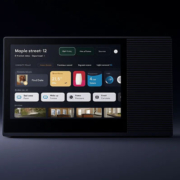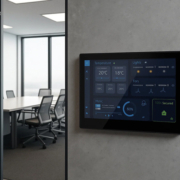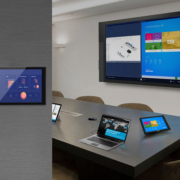What Are the Pros and Cons of Installing a Smart Home (Home Automation)?
In recent years, the concept of the “smart home” has evolved from a niche luxury into a mainstream lifestyle upgrade. With smart thermostats, connected lighting, voice assistants, and centralized control panels becoming more accessible, homeowners are increasingly turning to home automation to enhance convenience, security, and energy efficiency.
However, like any technology, smart home systems come with both benefits and potential drawbacks. In this article, we’ll break down the pros and cons of installing a smart home, and explore how Portworld’s smart home control panels and services can help you make the most of your investment.
Pros of Installing a Smart Home
1. Convenience & Centralized Control
Smart homes simplify everyday life. Whether it’s adjusting the lights, setting the thermostat, or locking the front door, automation puts control at your fingertips.
Portworld offers advanced smart home control panels—available in 4-inch and 5-inch touch screen versions—that act as centralized hubs. These Android-based panels allow you to manage lighting, climate, security, and more from a single interface.
Benefits:
- Control all devices from one screen or app
- Custom scenes like “Good Night” or “Away Mode”
- Compatible with Google Assistant, Alexa, and other ecosystems
Energy Efficiency & Cost Savings
Home automation allows for optimized energy use through scheduled lighting, smart thermostats, and real-time monitoring.
With Portworld’s smart control panels, users can:
- Create schedules for lights and appliances
- Monitor energy usage in real time
- Automate HVAC systems for peak efficiency
This can lead to lower electricity bills and a reduced carbon footprint.
Enhanced Security
Smart locks, cameras, sensors, and alarms give homeowners greater peace of mind and better protection.
Portworld’s control panels seamlessly integrate with most smart security devices, allowing you to:
- View security cameras
- Get motion or intrusion alerts
- Lock doors remotely
- Trigger panic or emergency protocols
Whether you’re home or traveling, smart home systems provide full oversight and control.
Remote Access & Automation
Control your entire home remotely through your smartphone or tablet. Forgot to turn off the lights? Need to adjust your thermostat before arriving home? No problem.
With Portworld’s Android-powered panels and companion apps:
- Access your smart devices from anywhere
- Set automation rules based on time or sensor input
- Receive instant notifications when something changes at home
Increased Home Value
A smart home isn’t just about lifestyle—it’s an investment. Homes with built-in automation features are often seen as more modern and desirable.
Installing smart home technology—especially a professionally designed system with Portworld’s elegant control panels—can increase property value and help your home stand out in the real estate market.
Cons of Installing a Smart Home
1. High Initial Costs
Smart home devices and systems can require a significant upfront investment, especially if you want full-home integration.
However, with Portworld’s CKD/SKD solutions, installers and developers can save on tariffs and hardware costs by assembling devices locally. This is a great way to reduce initial expenditure without compromising on quality.
Complex Installation & Compatibility
Different brands and platforms may not always work well together, leading to compatibility issues and a complicated setup.
Portworld addresses this by:
- Offering customizable Android-based panels for greater app compatibility
- Providing engineering support for system integrators
- Ensuring open platform integration with common protocols like Zigbee, Z-Wave, Wi-Fi, and Bluetooth
Privacy and Security Risks
With increased connectivity comes the risk of hacking or data breaches. Improperly configured systems or weak passwords can become vulnerabilities.
To mitigate this:
- Use encrypted networks and devices with security patches
- Opt for centralized systems like Portworld’s smart panels that support secure remote access
- Regularly update software and firmware
Portworld also offers OTA (Over-The-Air) update capabilities for long-term security support.
Learning Curve for New Users
Not everyone is tech-savvy. Older adults or those unfamiliar with smart technology may find it difficult to operate.
Portworld addresses this by providing:
- User-friendly interfaces with intuitive touch UI
- Pre-installed configuration templates for easier setup
- Multilingual support for global markets
Dependence on Internet Connectivity
Most smart home systems require a stable internet connection. If your Wi-Fi goes down, some features may be limited.
Some solutions include:
- Local control fallback in Portworld’s control panels
- Support for LAN-based operation where needed
- PoE (Power over Ethernet) options for reliable connectivity and power in one cable
Installing a smart home offers a range of transformational benefits, from improved convenience and security to energy savings and increased home value. But it’s also important to consider the potential challenges such as cost, complexity, and connectivity needs.
By choosing the right solution provider, these cons can be effectively managed.
Portworld delivers high-performance, cost-effective smart control panels and OEM/ODM support services that make smart living more accessible and efficient. Whether you’re a homeowner, developer, or integrator, Portworld empowers you to build smarter homes with confidence.










